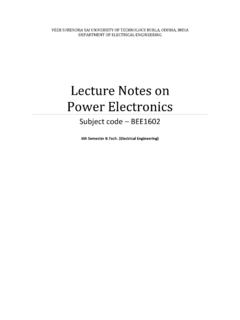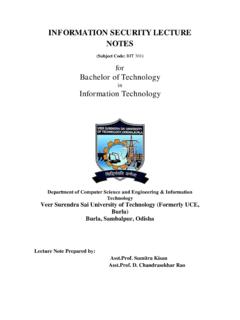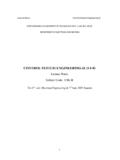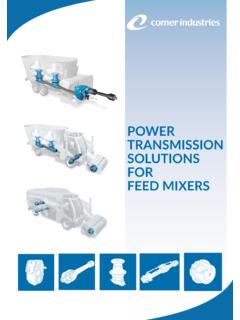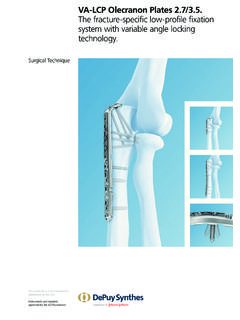Transcription of ELECTRICAL MEASUREMENTS & INSTRUMENTATION
1 CLASS NOTES ON ELECTRICAL MEASUREMENTS & INSTRUMENTATION 2015 1 CLASS NOTES ON ELECTRICAL MEASUREMENTS & INSTRUMENTATION FOR 5TH & 6TH SEMESTER OF ELECTRICAL ENGINEERING & EEE ( PROGRAMME) DEPARTMENT OF ELECTRICAL ENGINEERING VEER SURENDRA SAI UNIVERSITY OF TECHNOLOGY BURLA -768018, ODISHA, INDIA CLASS NOTES ON ELECTRICAL MEASUREMENTS & INSTRUMENTATION 2015 2 DISCLAIMER This document does not claim any originality and cannot be used as a substitute for prescribed textbooks. The matter presented here is prepared by the author for their respective teaching assignments by referring the text books and reference books. Further, this document is not intended to be used for commercial purpose and the committee members are not accountable for any issues, legal or otherwise, arising out of use of this document.
2 CLASS NOTES ON ELECTRICAL MEASUREMENTS & INSTRUMENTATION 2015 3 SYLLABUS ELECTRICAL MEASUREMENTS & INSTRUMENTATION (3-1-0) MODULE-I (10 HOURS) measuring instruments : Classification, Absolute and secondary instruments , indicating instruments , control, balancing and damping, constructional details, characteristics, errors in measurement, Ammeters, voltmeters: (DC/AC) PMMC, MI, Electrodynamometer type Wattmeters: Electrodynamometer type, induction type, single phase and three phase wattmeter, compensation, Energymeters: AC. Induction type siqgle phase and three phase energy meter, compensation, creep, error, testing, Frequency Meters: Vibrating reed type, ELECTRICAL resonance type MODULE-II (10 HOURS) Instrument Transformers: Potential and current transformers, ratio and phase angle errors, phasor diagram, methods of minimizing errors; testing and applications.
3 Galvanometers: General principle and performance equations of D' Arsonval Galvanometers, Vibration Galvanometer and Ballistic Galvanometer. Potentiometers: DC Potentiometer, Crompton potentiometer, construction, standardization, application. AC Potentiometer, Drysdale polar potentiometer; standardization, application. MODULE-III (10 HOURS) DC/AC Bridges :General equations for bridge balance, measurement of self inductance by Maxwell s bridge (with variable inductance & variable capacitance), Hay s bridge, Owen s bridge, measurement of capacitance by Schearing bridge, errors, Wagner s earthing device, Kelvin s double bridge. Transducer: Strain Gauges, Thermistors, Thermocouples, Linear Variable Differential Transformer (LVDT), Capacitive Transducers, Peizo-Electric transducers, Optical Transducer, Torque meters, inductive torque transducers, electric tachometers, photo-electric tachometers, Hall Effect Transducer MODULE-IV (10 HOURS) CRO: Block diagram, Sweep generation, vertical amplifiers, use of CRG in measurement of frequency, phase, Amplitude and rise time of a pulse.
4 Digital Multi-meter: Block diagram, principle of operation, Accuracy of measurement, Electronic Voltmeter: Transistor Voltmeter, Block diagram, principle of operation, various types of electronic voltmeter, Digital Frequency meter: Block diagram, principle of operation TEXT BOOKS [1]. A Course in Elec. & Electronics MEASUREMENTS & INSTRUMENTATION : A K. Sawhney [2]. Modern Electronic INSTRUMENTATION and Measurement Techniques: Helfrick & Cooper [3]. ELECTRICAL Measurement and measuring instruments - Golding & Waddis CLASS NOTES ON ELECTRICAL MEASUREMENTS & INSTRUMENTATION 2015 4 Model Question Paper: Set-1 Full Marks: 70 Time: 3 hours Answer any six questions including question No.
5 1 which is compulsory. The figures in the right-hand margin indicate marks. (Answer any six questions including 1) [2X10] 1. Answer the following questions: (a) Differentiate between the spring control and gravity control. (b) Why an ammeter should have a low resistance value. (c) What are the precautions taken while using a DC voltmeter and DC ammeter. (d) What is the major cause of creeping error in an energy meter (e) What are the errors occurs in instrument transformers. (f) Differentiate the principle of dc potentiometer and ac potentiometer. (g) What are the sources of errors in AC bridge measurement. (h) Differentiate between dual trace and dual beam CRO. (i) What are active and passive transducers?
6 Give examples. (j) What is piezoelectric effect. 2. (a) With a neat diagram explain in detail the construction of PMMC instrument. (b)What are the shunts and multiplier? Derive the expression for both, with reference to meters used in ELECTRICAL circuits. [5+5] 3. (a) Discuss with block diagram, the principle of operation of single phase energy meter. (b) An energy meter is designed to make 100 revolutions of the disc for one unit of energy. Calculate the number of revolutions made by it , when connected to a load carrying 40 A at 230V and for 1 hour. If it actually makes 360 revolutions, find the percentage error. [5+5] 4.
7 (a) Derive expression for actual transformation ratio, ratio error and phasor angle error of a (b) A current transformer with bar primary has 300 turns in its secondary winding. The resistance and reactance of the secondary circuit are and respectively, including the transformer winding. With 5A flowing in the secondary winding, the magnetizing mmf is 100AT and the core loss is W. Determine the ratio and phase angle errors. [5+5] 5. (a) Derive the equation of balance for Anderson bridge and also draw the phasor diagram. (b) An AC bridge is balanced at 2 KHz with the following components in each arm: Arm AB=10K , Arm BC=100 F in series with 100K , Arm AD=50K Find the unknown impendence R jX in the arm DC, if the detector is between BD.
8 6. (a) What is transducer? Briefly explain the procedure for selecting a transducer. (b) Derive an expression for gauge factor in terms of Poission s ration. [5+5] 7. (a) With a block diagram, explain the working of CRO (b) With a block diagram, explain in detail the digital frequency meter [5+5] 8. Write short notes on (a) Kelvin s double bridge (b) D- Arsonaval galvanometer [5+5] CLASS NOTES ON ELECTRICAL MEASUREMENTS & INSTRUMENTATION 2015 5 Model Question Paper: Set-2 Full Marks: 70 Time: 3 hours Answer any six questions including question No. 1 which is compulsory. The figures in the right-hand margin indicate marks. (Answer any six questions including 1) [2X10] Answer the following questions: (a) Why is damping required for an electromechanical measuring instrument?
9 (b) Why is scale of MI instrument calibrated non- linearly? (c) What is the difference between analog and digital frequency meter? (d) Which instrument can be used to measure non-sinusoidal voltage? (e) What is the major cause of creeping error in an energy meter? (f) What do you mean by active and passive transducer? Give suitable examples. (g) Draw a suitable AC bridge used for measurement of frequency. (h) What are the steps to be taken for minimizing errors in PT? (i) Discuss briefly the role of ordinary galvanometer? (j) What is the function of time base generator in CRO? (a) Derive the torque equation of a moving iron instrument? [5] (b) Sketch and explain the working of moving-coil instrument.
10 [5] (a) Discuss a method for measurement of low resistance. [5] (b) Explain the operation of a Wagner s earthing device. [5] Derive the errors of CT and PT, and discuss its preventives. [10] (a) Discuss about a ac bridge used for measurement of capacitance [5] (b) Discuss about a galvanometer which is used for measurement of frequency. [5] (a) How is the voltmeter calibrated with DC potentiometer ? [5] (b) What is the use of LVDT? Discuss its basic principle of operation. [5] (a) How are the frequency and phase measured in CRO. [5] (b)Draw the block diagram of an electronic voltmeter and explain its operation. [5] 8. Write short notes on any two: [5X2] (a) Owen s bridge (b)Digital frequency meter (c) Hall-effect transducer CLASS NOTES ON ELECTRICAL MEASUREMENTS & INSTRUMENTATION 2015 6 Model Question Paper: Set-3 Full Marks: 70 Time: 3 hours Answer any six questions including question No.



